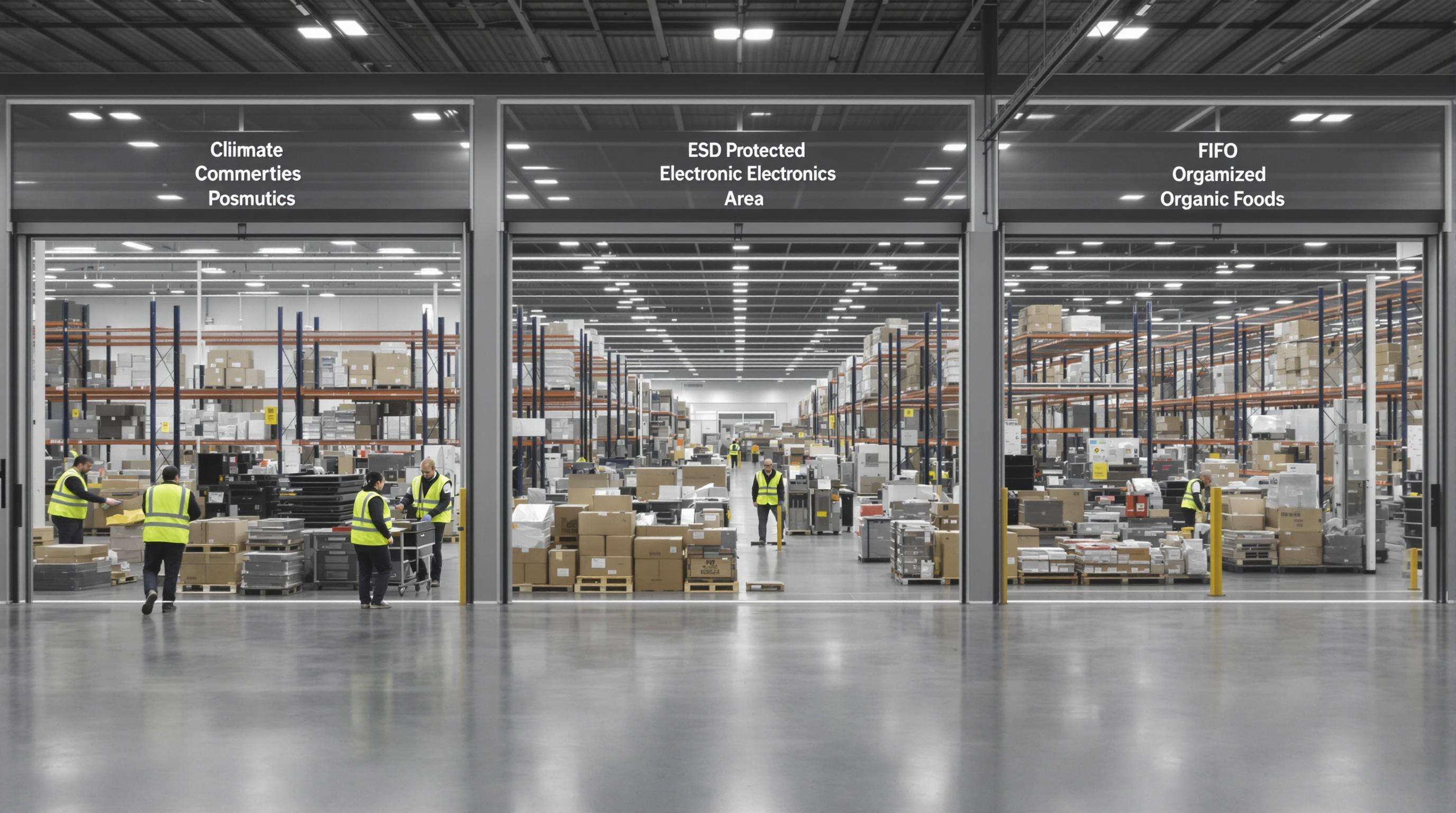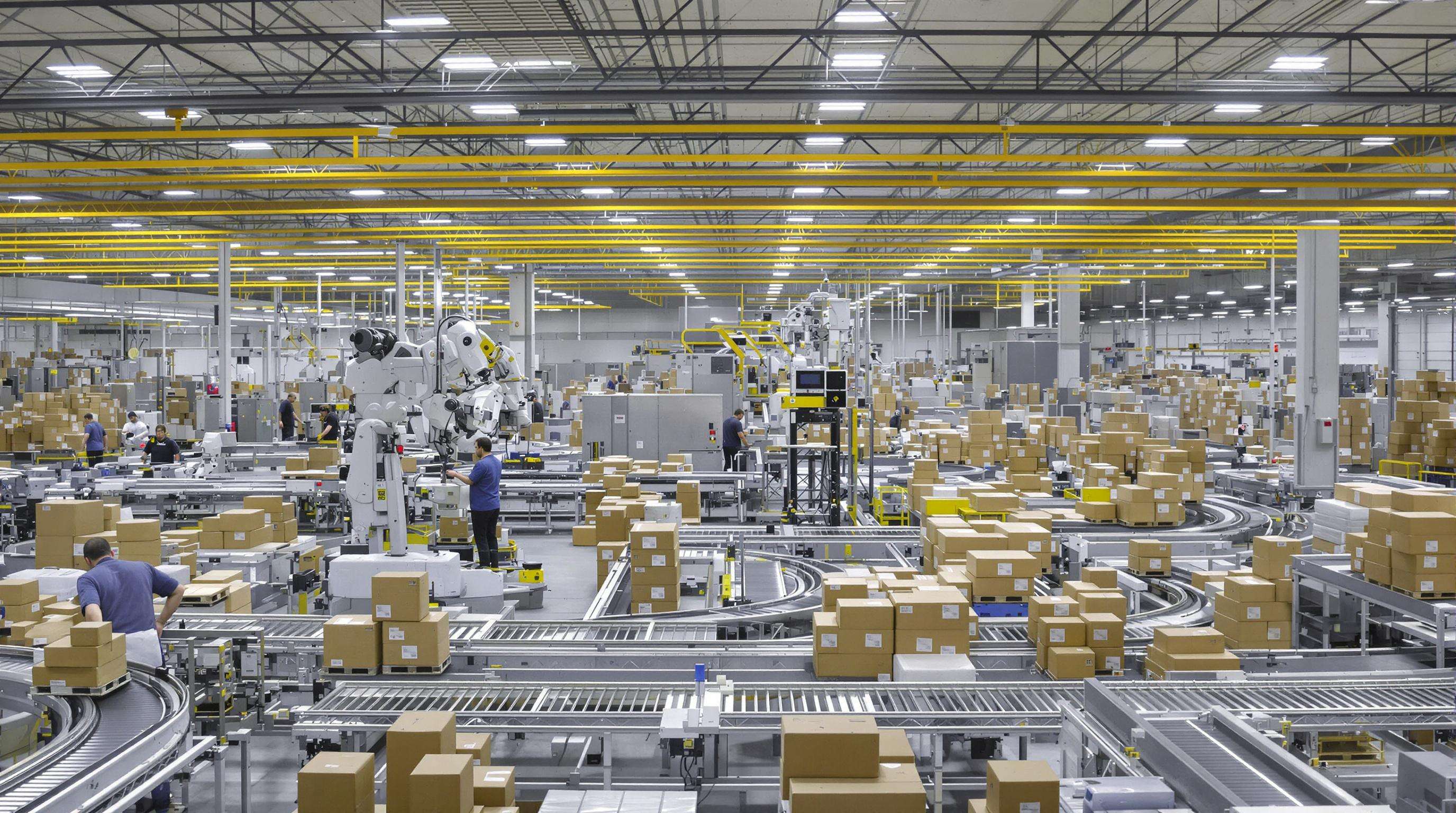
For e-commerce success, you need accurate demand forecasting to avoid overstocking or stockouts. By using advanced analytics, the company can now predict seasonal spikes with 92% accuracy, which allows warehouses to flex labor and storage accordingly. Scalable 3PL relationships enable businesses to “increase space by 40% at demand without long-term lease obligations,” which is especially important for industries that depend on seasonal sales and trends: holiday décor and swimwear, for example, realize 68% of annual sales within 8 weeks.
Unified inventory systems synchronize stock across marketplaces, DTC platforms, and B2B channels, reducing shipping errors by 31%. Successful strategies include:
Specialized requirements demand tailored solutions:
| Product Type | Critical Requirements | Cost Impact |
|---|---|---|
| Cosmetics | Climate-controlled zones (15-22°C) | +18% |
| Electronics | ESD-protected packaging stations | +23% |
| Organic Foods | FIFO rotation + batch tracking | +34% |
Proper protocol implementation reduces product damage claims by 57%, directly preserving margins.
With e-commerce returns costing $727 per order, automated return authorization systems recover 34% of product value through faster restocking cycles. Advanced solutions feature:

Scalable 3PL warehousing services leverage automation to streamline order accuracy and speed. Advanced systems like AI-driven pick-and-pack robots reduce human error by 85%, while automated sorting lines process 2,000+ units hourly. This ensures same-day shipping for 99% of orders, directly improving customer satisfaction.
Cloud-based inventory management systems provide granular, real-time SKU tracking across multiple fulfillment centers. Integrating IoT sensors and barcode scanning reduces stock discrepancies by 67% and cuts excess carrying costs. These platforms also enable dynamic replenishment alerts, slashing stockout risks during demand surges by 40%.
Top providers employ elastic warehousing models, activating 30-50% additional storage capacity within 72 hours during seasonal spikes. Hybrid staffing strategies combine permanent workers with AI-optimized temporary labor pools, reducing overtime costs by 22%. Pre-negotiated partnerships with regional carriers further ensure seamless scalability.
ISO 9001 and SOC 2-certified facilities enforce tamper-proof surveillance, biometric access controls, and encrypted data protocols. Regular third-party audits reduce compliance violations by 91%, while blockchain-based recordkeeping provides immutable shipment histories. Cybersecurity frameworks block 99.9% of intrusion attempts, safeguarding sensitive client and customer data.
Positioning warehouses near urban centers reduces average transit times by 37% compared to rural facilities. Inventory placement within 50 miles of high-population zones improves next-day delivery success rates by 28%, minimizing fuel costs and aligning with the shift toward distributed inventory management.
Operating 3-5 strategically placed distribution centers lowers regional shipping costs by 19% while maintaining 99% service-level agreements. Multi-node systems enable same-zone fulfillment for 73% of orders, bypassing cross-country freight bottlenecks and providing redundancy during supply chain disruptions.
Warehouse proximity to delivery endpoints directly impacts last-mile expenses, which account for 53% of total shipping costs. Facilities within metro areas reduce final-leg distances by 41% on average, slimming fuel budgets and carbon footprints. Real-time route optimization tools further cut idle time by 22%, leveraging localized warehousing for time-sensitive deliveries.
Contemporary inventory management solutions utilizes RFID tags, IOT sensors, and barcode scanners to track SKU-level visibility throughout the distribution chain. These technologies provide real-time stock position monitoring, reducing errors in manual counting by as much as 98%. Warehouses with integrated tracking systems have 63% fewer stockouts after analysis of supply chain efficiencies in 2024. Full synchronization with WMS systems allows having the same balance of selected goods on the basis of all the warehouses and sales outlets (clearance on the time scale can be configured to an interval of 15 minutes).
24-Month Sales Histories - Our state-of-the-art machine learning models crunch past sales, seasonality, and macro - economic data to predict inventory and a replenishment rate of 94%. The software also auto-calculates the ideal safety stock margin, and automatically places replenishment orders when regional demand patterns change, helping to reduce overstock by 35%. Connections to suppliers’ APIs allow dynamic lead-time – reducing costs for expedited shipping by 22% on high-moving goods. The best platforms leverage both weather data and social sentiments to pre-stock inventory 72 hours before anticipated demand surges and achieve 99% fulfilment for high-priority SKUs.
Real-time visibility across multiple storage zones are now available in advance WMS solutions that are RFID and barcode scanning-capable. They also decrease picking errors by 42% and elevate the average fulfillment speed by 2.9x vs. manual tracking. Today's sophisticated platforms will automatically prioritize workflow, and re-direct tasks dynamically when equipment or personnel are not available. Integration with existing ERP systems is still a key driver and with established integration schemes, projects are 28% more likely to be implemented successfully.
Low powered, networked IoT sensors monitor temperature, humidity and equipment vibration thresholds within perishables storage zones, which has reduced spoilage losses by 34%. Mobile asset utilization rates increase 19% with location-tracking beacons affixed on pallet jacks and forklifts to prevent collisions and optimize routes. Such systems are compatible with WMS software and produce automatic replenishment alerts when stock levels fall below minimum parameters.
Predictive analytics Learn More Solutions Solutions Zebra MotionWorks Proximity Zebra MotionWorks Space Optimization The solution process historical order data to predict SKU velocity with 92% accuracy to reorganize storage zones. Machine learning models maximize labor allocations at peak times, slashing overtime expenses by 23% (with zero reduction in 99% same-day shipping rates). Warehouses can gain 15–18% annually in productivity by optimizing in real time to KPIs such as cubic space utilization and energy expenditure per order.
A comprehensive review of service contracts is essential to uncovering hidden costs associated with 3PL agreements like storage minimums, order-processing surcharges and seasonal capacity premiums. A 2024 industry study found that 43% of companies were surprised with additional fees relating to contract confusion around temperature-controlled storage or special packaging needs. Seek out providers that use a modular pricing model in which units are priced based on inventory turnover, and negotiate audit rights to ensure accurate billing.
Calculating the value of 3PL relationships entails both hard cost reductions and operational efficiencies. It’s critical key metrics are saved financial expenses (on warehouses leases/equipment purchase), and labour (30–50% lower staffing costs Vs in-house operations). Adopting an integrated financial model to evaluate the benefits of 3PL scalability reveals that firms experience 15–22% higher absolute margins over five years by reaping volume discount savings in transportation and storage. Consider dynamic factors such as demand volatility and local tax advantages in ROI projections and compare the scenario-based forecast of in-house logistics overhead against variable 3PL service charges.
Demand forecasting allows a business to accurately anticipate inventory needs, preventing overstocking and stockouts, which can lead to financial losses.
These strategies unify inventory systems to synchronize stock across multiple sales channels, reducing errors and optimizing delivery processes.
Different products have unique handling and storage needs, such as temperature control and batch tracking, to avoid spoilage and damage, preserving product quality and customer satisfaction.
It provides visibility into stock levels, reduces discrepancies, and minimizes manual counting errors, enhancing overall operational efficiency.
Technological integration, including advanced WMS and IoT systems, streamlines operations, optimizes processes, and reduces errors through automation and real-time data access.
 Hot News
Hot News2024-11-15
2024-11-11
2024-11-06
2024-10-31
2024-10-28
2024-10-25